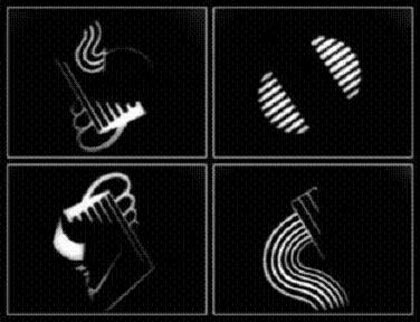

Viking Eggeling

I’m currently reading Matthew Gale’s Dada & Surrealism, an entertaining and authoritative primer on two of the most important, yet frequently misunderstood, art movements of the early-20th century. The book does a fine job of evoking the passion that these artists had for their work. Creating art was not a 9-to-5 for any of these artists; they lived and breathed their art to an extent that is perhaps difficult to understand nowadays.
Both movements happened in a competitive creative climate: artists would intentionally provoke audiences to the point of physical riots, art critics would challenge artists to duels over stylistic disagreements, artists would publish magazines to deride the work of contemporaries. In this type of challenging environment, boundaries were inevitably shattered and creative breakthroughs made.
To bring this back to animation, the book notes that a few of the Dada artists, like Viking Eggeling and Hans Richter, also moved into experimental animation. In the early-1920s, they were creating pioneering pieces of abstract animation in Germany alongside other artists like Oskar Fischinger and Walter Ruttman. The combined output of these artists would have a major influence on future abstract animators like Len Lye, Norman McLaren and beyond. This sentence in the book about Eggeling caught my attention in particular: “Despite the relative simplicity of the technology, the production of [Horizontal-Vertical Orchestra and Diagonal Symphony] was a financial and physical strain and led to Eggeling’s premature death in 1925.”
The thought of an animation artist dying for his art is a powerful beautiful sentiment. A quick search online turns up a website that says the cause of Eggeling’s death was septic angina, a type of food poisoning, so I’m not exactly sure where Gale’s information comes from, but reading about the dedication of various artists throughout the book, it’s not difficult to imagine that an artist like Eggeling could work himself to the point of death. It is indicative of the commitment that artists felt towards their work and how far they were willing to push themselves in pursuit of their artistic ideals.
The wonders of the Internet allow us instant access to the film that did Eggeling in, Diagonal Symphony, a silent abstract short that was completed in 1924, but didn’t debut in Berlin until 1925. Eggeling died six days after the film’s first public screening. The same site, UbuWeb, also offers examples of early abstract animation by Hans Richter and Walter Ruttman.

